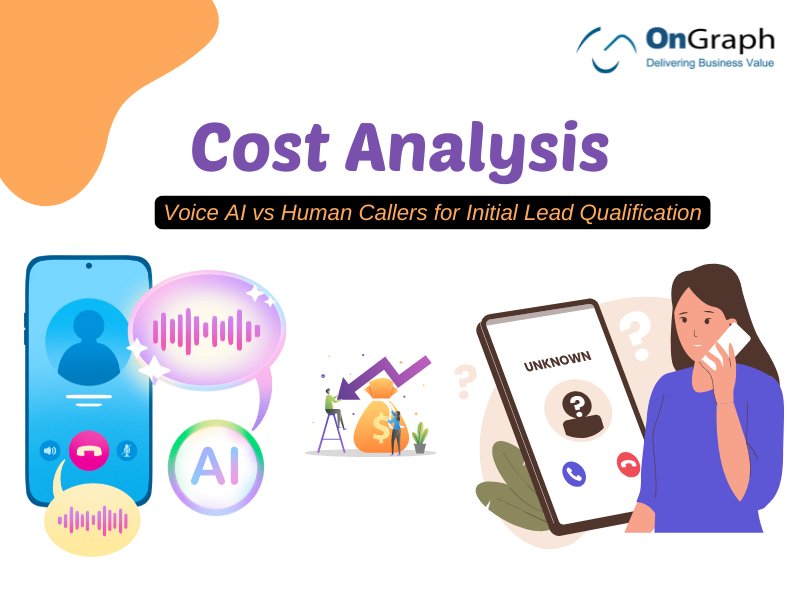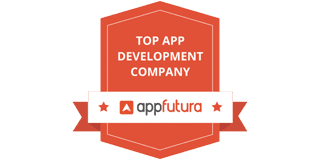In today’s fast-moving business world, qualifying leads quickly can be the key to winning or losing a sale. Many companies struggle to do this in a way that is both scalable and affordable. That’s why a clear Voice AI vs Human Callers Cost Analysis is so important when deciding how to manage lead qualification.
We recently worked with a company that wanted to automate the first step of its lead process using Voice AI. Their goal was simple: quickly screen large numbers of leads, identify serious prospects, and pass them on to the sales team.
In this blog, we’ll walk you through a detailed cost comparison between Voice AI and human callers, based on real numbers and use cases.
Key Metrics: Voice AI vs Human Callers
| Metric | Voice AI Agent | Human Caller |
| Cost Model | Pay-as-you-go | Fixed monthly salary |
| Unit Cost | US $0.10 / minute | US $240 / month (avg) |
| Availability | 24 × 7 × 365 | 8 hrs/day, 26 days/month |
| Talk Time | Scales with demand | ~2,340–3,120 ( 50 Connected calls in day X 2 Mins Avg Talking time X 25 working days in a month = 2500 Minute in a month) |
| Idle-Time Cost | None | Paid even during idle time |
| Multilingual Support | 40+ languages | Requires extra hiring and training |
| Overheads | None | Includes benefits, workspace, etc. |
This comparison highlights the voice AI cost advantages for lead qualification when compared with human agents. Let’s dig deeper into the numbers.
Scenario 1: 3,000 Connected Minutes per Month
To qualify 3,000 minutes of leads monthly:
Voice AI:
- Total Cost: 3,000 minutes × $0.10 = $300
- Cost per Connected Minute: $0.10
- Scalability: Automatically scales with demand
- Multilingual Reach: Handles multiple languages instantly
Human Caller:
- Base Salary: Approx. $240/month
- Overhead Costs: Raise total to ~$300 per agent
- Effective Talk Time: ~2,340–3,120 minutes/month
- Cost per Productive Minute: Exceeds $0.12 after accounting for idle time
- Language Barriers: Need extra hires or training for multilingual campaigns
When comparing the Voice AI cost vs human caller, the pay-as-you-go model clearly favors businesses looking for efficiency and flexibility.
Scenario 2: Scaling to 6,000 Minutes per Month
As lead volume grows, the cost impact becomes even more apparent:
Voice AI:
- Monthly Cost: 6,000 minutes × $0.10 = $600
- Cost per Minute Remains: $0.10
- Extra Capacity: No added infrastructure or staff needed
Human Callers:
- Need More Staff: Two agents required for 6,000 minutes
- Total Salary & Overhead: ~$480–$600+
- Added Complexity: Recruitment, onboarding, and supervision
For higher volumes, Voice AI lead generation tools provide not just lower costs but faster response times and 24/7 availability.
Boost Leads, Cut Costs—Switch to Voice AI!
Why Voice AI is the Smarter Investment?
Here’s a closer look at the broader value Voice AI brings beyond just pricing:
Cost Efficiency
- No idle time expenses
- Transparent pricing: Pay only for what’s used
- No hidden costs like workspace, training, or benefits
Scalability
- Instantly scale to thousands of conversations per day
- Perfect for campaigns with fluctuating lead volume
Multilingual Capability
- Supports over 40 languages
- No need to hire and train multiple agents
24/7 Availability
- Handle leads during non-business hours
- Great for global or time-sensitive campaigns
Lead Filtering Automation
- Qualifies leads instantly
- Passes only the high-potential ones to the sales team
Use Cases: Voice AI for Lead Qualification
Voice AI agents are widely used across industries:
- Healthcare: For screening patient leads or appointment inquiries
- Real Estate: To qualify buyer or tenant interest
- eCommerce: Automating product-related queries before handoff
- B2B Services: To pre-qualify leads based on budget, timeline, or role
If you’re exploring this space, consider partnering with an AI Voice Agent Development Company that can customize the experience for your business goals.
How Much Does Voice AI Cost?
The pricing for most AI-powered call automation tools starts around $0.10 per connected minute, making them ideal for initial engagement, cold calling, and lead qualification. Advanced platforms can even integrate with your CRM and route leads directly.
Tools in this space include:
- Voice AI call center software
- AI cold calling tools
- Voice AI for outbound sales and lead capture
Final Takeaway
When it comes to initial lead qualification, Voice AI clearly outperforms human callers in cost, scalability, and consistency. The Voice AI vs Human Callers Cost Analysis shows that whether you’re handling 3,000 or 10,000 minutes a month, the cost stays predictable, and performance remains consistent.
Meanwhile, the cost of human calling continues to increase with volume due to hiring, idle time, and operational overheads.
By leveraging Voice AI for lead qualification, companies can:
- Lower operational costs
- Improve response time
- Focus their human sales reps on closing, not filtering
This leads to faster pipeline movement, better conversions, and reduced staffing challenges—making it a win-win for modern sales teams.
24/7 Lead Qualifiers—Zero Human Fatigue!
Cut response times to seconds and boost lead engagement with tireless Voice AI that works round-the-clock.
FAQs
Voice AI typically operates on a pay-per-minute model, averaging around $0.10 per connected minute. In contrast, human callers require a fixed monthly salary—usually around $240/month—plus overheads such as workspace, benefits, and idle time. When all costs are factored in, the per-minute cost for human callers often exceeds $0.12, making Voice AI the more cost-efficient choice for lead qualification.
Voice AI systems scale instantly based on demand. Whether you’re handling 3,000 or 30,000 minutes per month, there’s no need to hire additional agents or invest in more infrastructure. Human teams, on the other hand, require hiring, training, and workspace expansion to handle increased volume, slowing down scalability and increasing costs.
Yes, Voice AI is highly effective for initial lead qualification. It can ask screening questions, analyze responses, and determine lead quality. Qualified leads are then passed to human sales reps. This automation reduces manual effort, speeds up response time, and ensures no lead is missed—even outside business hours.
Human callers come with several hidden costs:
- Idle time (paid even when not calling)
- Recruitment and training expenses
- Office space and equipment
Employee benefits and sick leaves
These factors increase the total cost per productive minute and limit flexibility.
Yes, most modern Voice AI platforms support over 40 languages. This eliminates the need to hire multilingual staff, making it ideal for businesses targeting global markets. Human teams often require extra hires and ongoing training to match this level of support.
Voice AI platforms typically include end-to-end encryption, compliance with data protection regulations (like GDPR or HIPAA), and secure cloud storage. Businesses should ensure the vendor follows industry best practices in call security and data privacy.
Voice AI is ideal for:
- Startups looking to scale lead outreach affordably
- Enterprises with high inbound or outbound call volumes
- Businesses that need 24/7 lead capture
- Companies targeting multilingual audiences
It works especially well in industries like healthcare, real estate, SaaS, and eCommerce where quick lead response is critical.
About the Author
Let’s Create Something Great Together!
Latest Blog
















